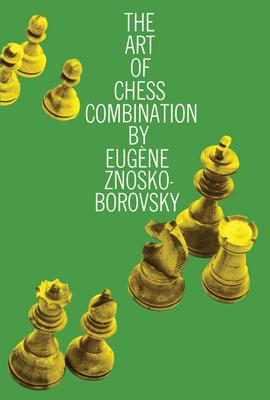
The great modern teacher begins by examining the games of master players, including Capablanca, Alekhine, Rubinstein, Nimzovich, Tarrasch, Reti, Mason, Morphy, Bird, Euwe, Emanuel Lasker, etc. The games are grouped according to common features, and perceptively analyzed to determine what conclusions may be drawn. Znosko-Borovsky shows that every combination, however complicated, begins in a simple idea, such as an undefended piece, the bad position of the hostile king, the promotion of a pawn, or a discovered check.
The Art of Chess Combination will improve the game of anyone who knows how to move individual pieces but finds it hard to plan many moves ahead to make the pieces work together. The exposition is easily understood; technical terms are almost completely avoided but clarity and precision remain.
"In the teaching of chess he may claim to have no superior." -- Philip W. Sergeant.
The great modern teacher begins by examining the games of master players, including Capablanca, Alekhine, Rubinstein, Nimzovich, Tarrasch, Reti, Mason, Morphy, Bird, Euwe, Emanuel Lasker, etc. The games are grouped according to common features, and perceptively analyzed to determine what conclusions may be drawn. Znosko-Borovsky shows that every combination, however complicated, begins in a simple idea, such as an undefended piece, the bad position of the hostile king, the promotion of a pawn, or a discovered check.
The Art of Chess Combination will improve the game of anyone who knows how to move individual pieces but finds it hard to plan many moves ahead to make the pieces work together. The exposition is easily understood; technical terms are almost completely avoided but clarity and precision remain.
"In the teaching of chess he may claim to have no superior." -- Philip W. Sergeant.
Paperback
$22.95